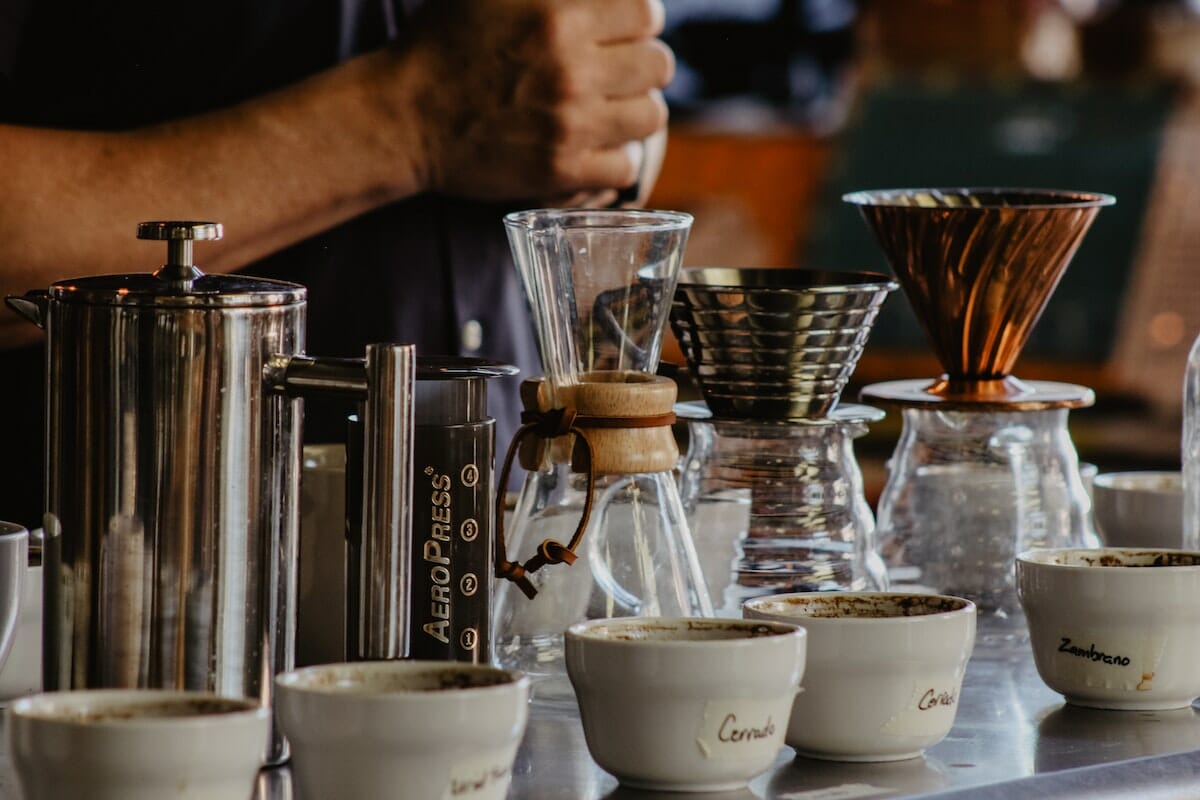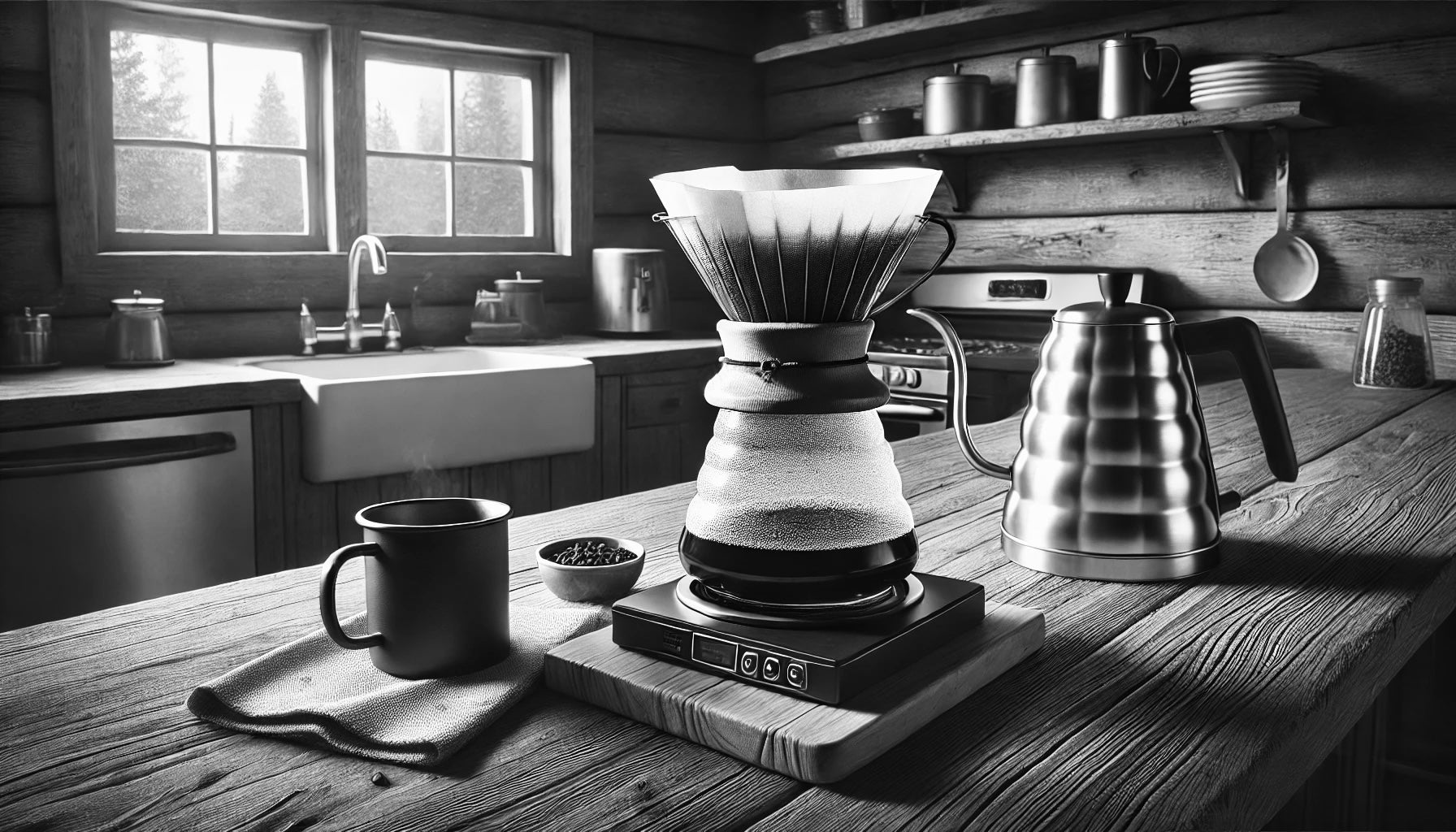Coffee Brewing Methods: Unlocking the Secrets to the Perfect Cup at Home
Coffee Brewing Methods: Unlocking the Secrets to the Perfect Cup at Home
Blog Article
The Scientific Research Behind Coffee Brewing: Exactly How Temperature and Time Affect Your Beverage
Comprehending the scientific research behind coffee brewing discloses that temperature and time are not plain variables however crucial elements that determine the drink's taste profile and overall top quality. As we check out the subtleties of these aspects, the question emerges: just how can one efficiently balance temperature and time to attain that perfect brew?
The Chemistry of Coffee Removal
The chemistry of coffee extraction looks into the complex processes that change raw coffee beans right into the aromatic drink delighted in worldwide. This makeover mainly entails the solubility of different compounds present in the beans, which are affected by elements such as work dimension, water quality, and the developing method utilized.
Throughout the developing process, warm water acts as a solvent, drawing out soluble substances, including caffeine, acids, sugars, and lipids, from the coffee premises. Each compound contributes to the taste account, fragrance, and body of the final beverage. Acids are accountable for tangy and brilliant notes, while oils contribute to an abundant mouthfeel.
The preliminary phases of developing essence acids and sugars, leading to a positive acidity, while long term extraction can lead to anger due to over-extraction of unwanted compounds. Understanding these chemical communications is critical for maximizing developing methods, as the balance in between removal time and water temperature can dramatically affect the general high quality of the coffee.
Perfect Brewing Temperatures
Locating the right developing temperature is necessary for unlocking the full possibility of coffee tastes and scents - coffee brewing methods. Study indicates that the optimal variety for brewing coffee lies between 195 ° F to 205 ° F(90 ° C to 96 ° C) Within this range, the extraction process effectively dissolves the preferable soluble compounds in coffee beans, resulting in a savory and balanced mug
Developing at reduced temperatures, such as listed below 195 ° F(90 ° C ), may cause under-extraction, generating a weak and acidic mixture with soft tastes. On the other hand, developing at temperatures going beyond 205 ° F(96 ° C) can cause over-extraction, producing a bitter and rough preference due to the too much dissolution of undesirable substances, such as tannins.
Moreover, the suitable brewing temperature can differ depending on the coffee bean kind and roast degree. For instance, lighter roasts usually take advantage of somewhat greater temperatures to boost their complicated taste accounts, while darker roasts might be better fit to reduced temperatures to minimize anger.
Ultimately, preserving precision in brewing temperatures is important for attaining an unified equilibrium of tastes, making sure that every mug of coffee supplies an enjoyable sensory experience.
Influence of Developing Time
Brewing time plays a crucial duty in establishing the taste account and general high quality of coffee. The extraction process, which influences the preference, fragrance, and body of the drink, is mainly based on exactly how long the coffee premises touch with water. Much shorter developing times can lead to under-extraction, causing a sour or weak flavor, as not enough soluble substances are liquified. On the other hand, prolonged developing can bring about over-extraction, where unfavorable compounds are launched, causing an astringent or bitter taste.
Ideal brewing time differs depending upon the method made use of and the grind dimension of the coffee. As an example, a French press generally calls for regarding four minutes, while espresso extraction is typically finished within 25 to 30 seconds. It is important to calibrate developing time in conjunction with various other variables, such as water temperature and coffee-to-water proportion, to attain the preferred taste profile.
Recognizing the impact of developing time enables coffee lovers to refine their brewing strategies, eventually boosting the sensory experience of their cup (coffee brewing methods). With cautious focus to this variable, one can unlock the full possibility of the coffee, revealing its special characteristics and nuances
Developing Methods and Their Results

For circumstances, approaches like French press and cool mixture enable a much longer steeping time, resulting in a fuller body and durable flavor as a result of increased extraction of oils and soluble solids. Conversely, espresso brewing utilizes high pressure and a much shorter extraction time, producing a concentrated shot that highlights extreme tastes and a rich crema.
Pour-over techniques, such as Chemex or V60, use an even more regulated removal process, enabling the maker to adjust flow price and water circulation, which can improve brightness and quality. Meanwhile, percolation approaches cycle water with the coffee premises several times, resulting in a stronger, frequently bitter flavor.
Last but not least, using paper filters versus steel filters can also impact the final preference; paper filters usually yield a cleaner mug by capturing oils and fine particles, while steel filters permit more oils to pass through, try this out contributing to a fuller mouthfeel - coffee brewing methods. Comprehending these nuances can boost the coffee experience considerably
Tips for Improving Your Brew
A well-executed mixture can transform also the simplest coffee right into an impressive experience. To attain this, focus to detail is vital. Beginning with high-quality, fresh baked beans, as their taste profile lessens in time. Grind the beans simply before brewing to take full advantage of freshness, ensuring the work dimension matches your brewing approach-- coarser for French press and finer for coffee.
Water high quality plays a crucial role; usage filtered water devoid of contaminations. The ideal developing temperature level ranges in between 195 ° F and 205 ° F(90 ° C to 96 ° C ) Also warm can blister the coffee, while too trendy may under-extract tastes.
Timing is just as essential. For immersion techniques, steeping for three to five mins is optimal, whereas drip approaches usually take about five minutes. Explore mixture times to find your preferred stamina.

Verdict
In recap, the detailed partnership in between temperature level and time is paramount in the coffee brewing process. Recommended Reading Adhering to optimal developing temperature levels in between 195 ° F and 205 ° F, along with specific timing customized per technique, makes sure the preferred flavor profile is achieved. Understanding these scientific concepts encourages people to fine-tune their brewing techniques, inevitably Clicking Here bring about a much more satisfying and balanced coffee experience. Proficiency of these aspects is necessary for any type of coffee enthusiast seeking quality in their drink.
Understanding the scientific research behind coffee brewing discloses that temperature level and time are not mere variables yet critical components that dictate the drink's flavor account and general quality. Comprehending these chemical interactions is critical for enhancing developing methods, as the equilibrium between removal time and water temperature can substantially influence the general quality of the coffee.Developing time plays a crucial function in determining the flavor account and overall high quality of coffee. By concentrating on these elements-- bean top quality, grind dimension, water temperature, soaking time, and proportion-- you can elevate your coffee developing procedure, resulting in a regularly remarkable mug.
In summary, the complex partnership between temperature and time is extremely important in the coffee brewing procedure.
Report this page